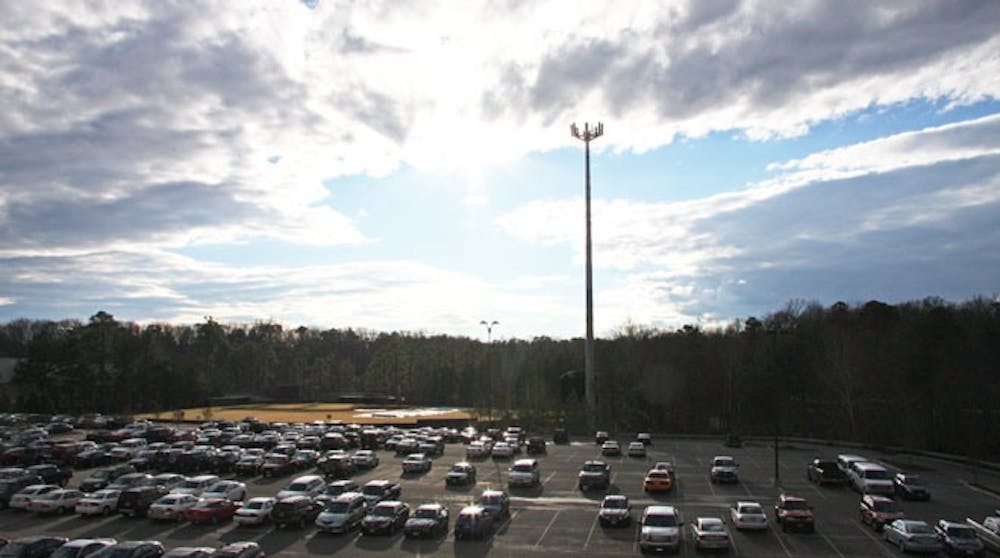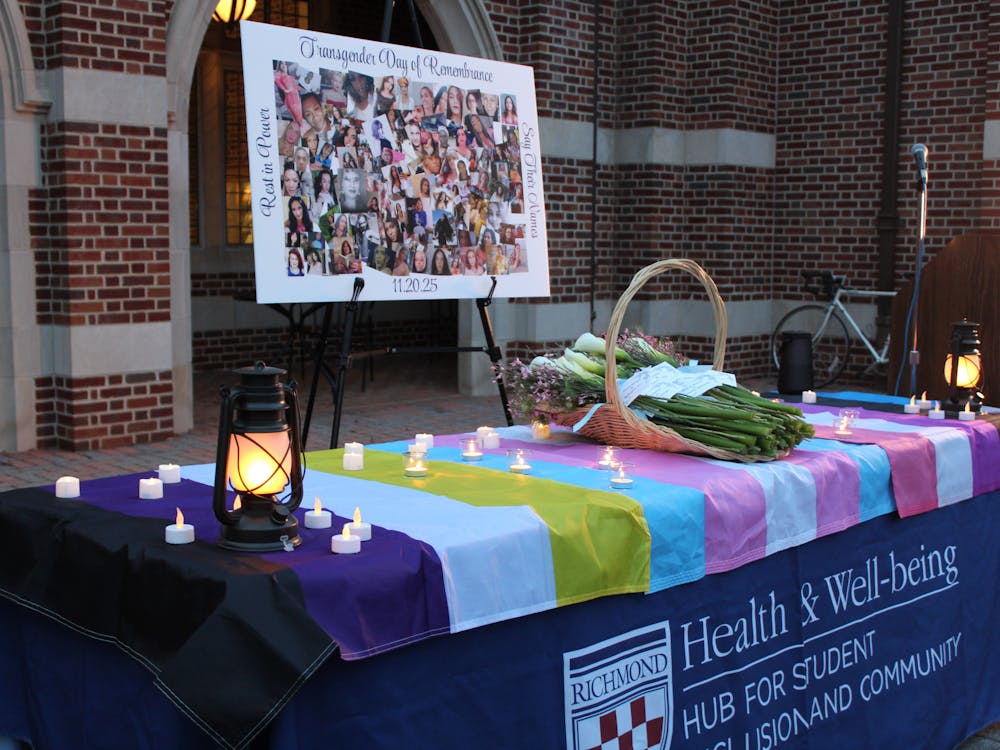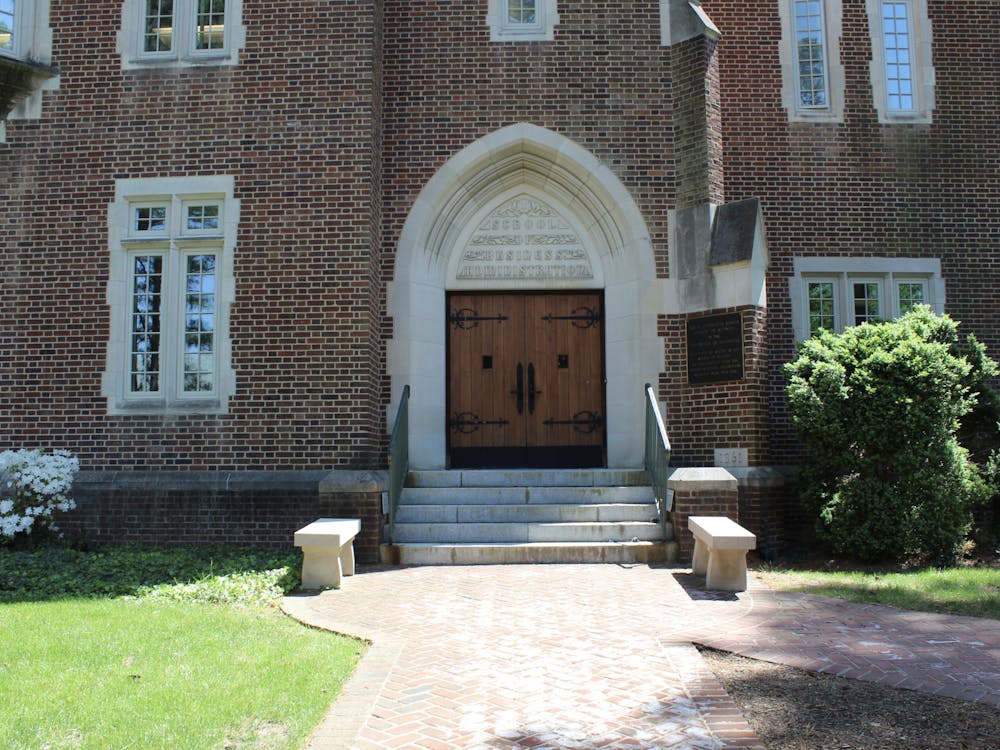The University of Richmond reached new heights in December with the addition of a Verizon cell phone tower.
The tower, located behind Pitt Field, is the result of years of planning and was put into action after leaders at Richmond mandated an improvement in emergency communication on campus. This mandate initiated construction of the tower, which the city of Richmond approved this summer.
Workers at Verizon, whose cell site is close to campus, agreed to build and fund the tower. The tower was designed to accommodate four other carriers: Sprint, AT&T, T-mobile and nTelos, if desired.
Doug West, the director of telecommunications, media support and user services, said some phone companies provide better reception on campus because of their proximity.
"Of the non-AT&T carriers, Verizon was the closest to the campus, and that's why they were basically number two in terms of coverage quality."
West said the biggest problem with previous coverage was that Verizon's signal was not strong enough to penetrate buildings. AT&T users fared better, but could rarely get reception away from windows. Other carriers offered little reception inside or out.
The Gottwald Center for the Sciences, Boatwright Memorial Library and the Weinstein Center for Recreation and Wellness were common "dead zones" with no reception. Now, the tower provides adequate reception to all of these areas and better reception to the areas already covered.
As students piled into the Robins Center Wednesday night for the basketball game against the University of Rhode Island, shouts of surprise echoed around the dome. Comments like, "You get service in here now?" "Yeah, four bars!" were heard over the announcer.
Sophomore Tonya Lazdowski said: "I can get service in the gym, Gottwald, the basements of the library ... it's so nice to have decent service."
Another student, Megan Molnar, agreed.
"Finally," she said, "I feel like I have reliable phone service on campus and am not afraid that I'm going to miss an important call or drop one like I had in the past!"
Many students said the tower has made a positive impact, but that impact came quietly. One student, when asked what she thought of the cell tower by the lake, said, "Wait, there's a tower there? I didn't know."
Enjoy what you're reading?
Signup for our newsletter
West said telecommunications had received similar reactions. He said: "Since the tower has gone up, one common sentiment that I have heard is 'that it is not as noticeable as I had imagined.' In terms of feedback from Verizon users, Verizon being the first to turn up service, the feedback has been extremely positive."
Still, others argue that the structure distracts from the beauty of the campus. Christopher Smith, a sophomore, said: "I just hate the fact that it is an eyesore to our campus. The AT&T tower is barely noticeable, if noticeable at all. But now, as I walk through the forum, my line of sight of the beautiful lake and Gothic style buildings in the background is disrupted by the now highest point on campus."
Smith, a Verizon user, did say his service was better than before. "Now I don't have to stick my phone out the window to send a message."
West said construction of the tower was discussed with the university community and the Richmond community to minimize comments like Smith's. He said, "There is absolutely no perfect location, and it does impact campus aesthetics. The tower and the subsequent location of the carriers allows us the opportunity to address a previous weakness in our ability to send our emergency communications notices in the most effective manner. The location simply helps us achieve that goal."
Many sites were considered in the past two years, but the site at Pitt Field provided the best overall coverage based on radio frequency testing and was one of few locations big enough to support the tower and multiple shelters.
Cellular signal is affected by the topography of the land, the amount of trees in the area, and the material of nearby buildings. Richmond's campus is hilly and its buildings are all brick, which poses an obstacle for signals trying to get through. This is why many carriers can only provide limited service.
The university telecommunications staff partnered with SunCom, which is now AT&T, eight years ago to build a rooftop antenna to provide wireless service for the campus. The AT&T facility still exists but could not support additional carriers. University staff knew another facility would have to be built eventually.
"Eventually" crept closer after the Virginia Tech shooting in 2007. West said, "One of the outcomes of the tragedy at Virginia Tech was that most colleges and universities around the country focused significant effort on deploying mass messaging systems so that they could alert an entire campus community in an emergency event." In response to complaints of sexual assault, break-ins and robberies on campus this fall, the university realized the need for an effective system.
Reports from students, faculty and parents over the last decade requested that telecommunications officials fix the problem of limited cellular access.
According to departmental records, 91 percent of students want to be reached by cell phone during an emergency and 85 percent want to be informed by text message. West said this information indicated that acceptable access to wireless services could no longer be a convenience, but was of highest importance.
The process of preparing the land, laying the foundation, fencing the area and gathering utilities took two months, but the assembling of the tower took only three days, West said. The site, the height of the tower and the number of carriers needed was decided two years ago.
Last year, West formed a committee to discuss the removal of land lines in the dorms. He said if no one is using the phones there was no reason to continue providing the service. The decision was postponed for a year to further evaluate the improvements of the tower. If students can receive messages and calls reliably, then there is justification for the removal of the land lines.
West said the telecommunications department plans to continue inspections of in-building coverage over the next two months to fix any remaining problems with signal. All residence halls will be inspected.
Richmond students can now communicate effectively from all areas of the campus, helping dissolve the "Richmond bubble."
Contact reporter Rachel Bevels at rachel.bevels@richmond.edu
Support independent student media
You can make a tax-deductible donation by clicking the button below, which takes you to our secure PayPal account. The page is set up to receive contributions in whatever amount you designate. We look forward to using the money we raise to further our mission of providing honest and accurate information to students, faculty, staff, alumni and others in the general public.
Donate Now



